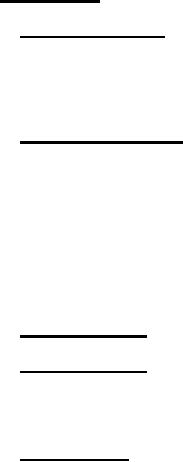 |
|||
|
Page Title:
Test Method No. 1 Reliability Test |
|
||
| ||||||||||
|
|  MIL-T-52953C
APPENDIX
TEST METHOD NO. 1
RELIABILITY TEST
1.
Test course:
a.
Layout of course . The test course shall be set up equivalent to the
provisions of figure 1. The course perimeter shall be demarcated
with suitable barriers or indicators. Rubber pylons or other
suitable marking shall be placed on all corners and other critical
points to assist in keeping the truck being tested within the course
limits.
b.
Obstacle inclusion . The obstacle test shall be set up in accordance
with the provisions of figure 2 or figure 3 as applicable, as a part
of the test course. Iron, wood, cement, or steel blocks may be used.
A guideline 15 feet long shall be provided to the left of the
centerline of the course and parallel to it. The inner edge of this
guideline shall be at a distance from the course centerline equal to
one-half of the truck width or one-half of the load width (whichever
is greater) plus 6 inches. This spacing and arrangement will allow
the left wheels of the truck under test to pass over the first block
and than the right wheels to pass over the second block while the
truck is moving forward in a straight line parallel to the guideline.
c.
Ramp inclusion. The course shall include a ramp constructed in
accordance with the provisions of figure 4.
d.
Course surface. The course shall be paved with concrete having a
fine float finish, or equivalent, having a road resistance of
approximately 30-50 pounds per ton. It shall be dry, clean, and free
of any nonplanned obstacles or foreign material while conducting the
reliability test.
e.
Pallet areas. Pallet loads in the first pallet area shall be stacked
in accordance with figure 5 or figure 6 as applicable. They shall be
placed 2 inches apart in a direction parallel to, and touching in a
direction perpendicular to the axis of the test course at that point.
Side pallet stacks shall be high enough that the bottom of the top
face of the top pallet in each stack is 6 inches below the maximum
lift height of the vehicle under test. The stack marked "X" on
figure 1 shall be high enough that the bottom of the top face of the
pallet, when placed upon it, shall be 6 inches below the maximum lift
height of the vehicle under test. Pallet loads in the second pallet
area shall be stacked in accordance with figure 7 or figure 8 as
applicable. They shall be placed 2 inches apart in a direction
parallel to, and touching in a direction perpendicular to the axis of
the test course at that point. Side pallet stacks shall be high
enough so that the bottom of the top pallet will be approximately as
high as the maximum lift height of the truck under test. The stack
marked "Y" on figure 1 shall be high enough that the bottom of the
top face of the pallet, when placed upon it, shall be at the midpoint
between ground level and the maximum lift height of the vehicle under
test. Pallet loads in the third pallet area shall be stacked in
accordance with figure 9. They shall be placed 2 inches apart,
positioned as shown on figure 1, in a direction parallel to, and
touching in a direction perpendicular to the axis of the test course
26
|
|
Privacy Statement - Press Release - Copyright Information. - Contact Us |